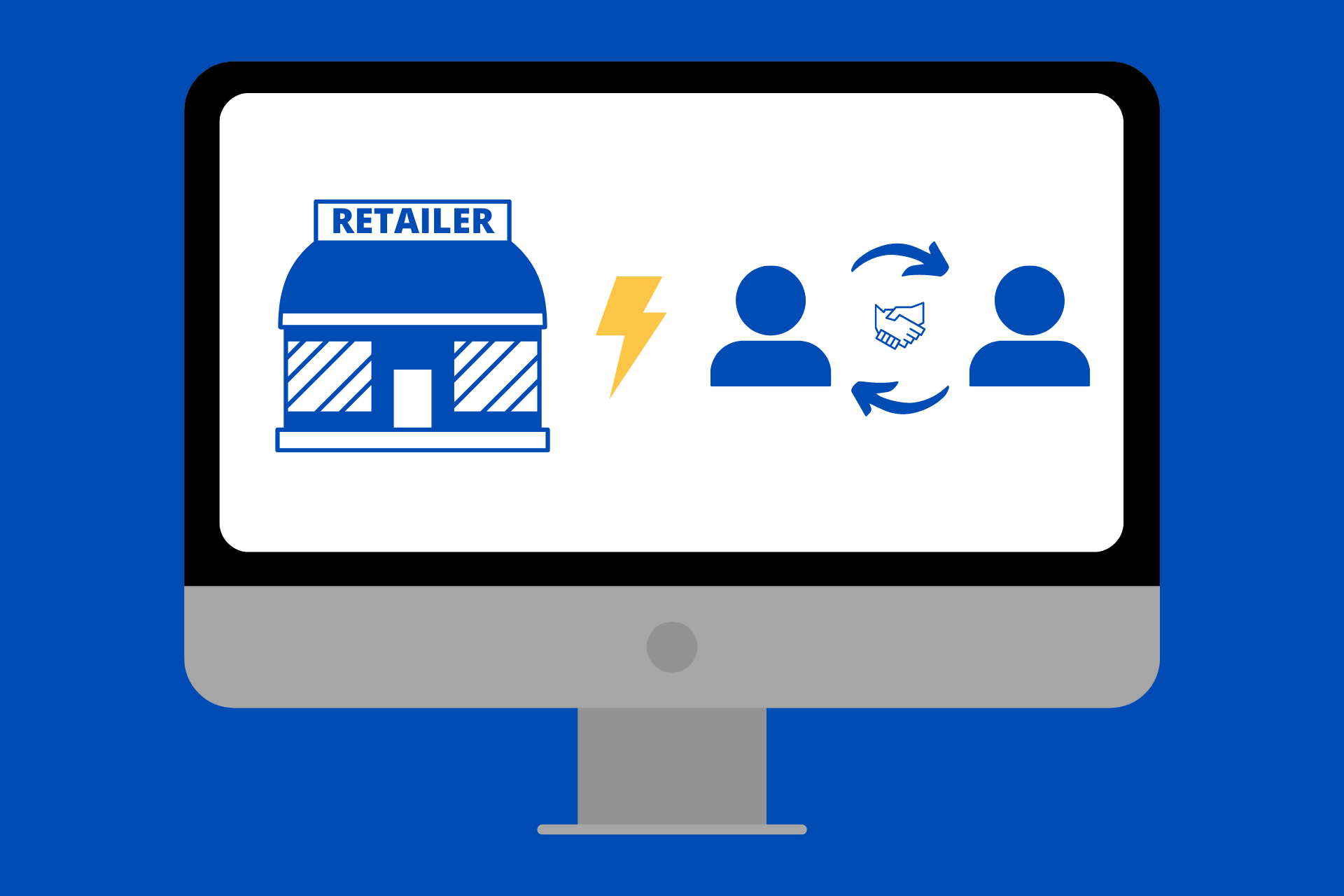Actions RSE : 10 conseils pour performer sur le marché de la seconde-mainArticle
10 juillet 2023

Les actions RSE, ou Responsabilité Sociale des Entreprises, représentent un engagement volontaire par lequel les entreprises décident d’intégrer des préoccupations sociales, environnementales, et économiques dans leurs activités et leurs interactions avec leurs parties prenantes. Au cœur de la stratégie d’entreprise, les actions RSE se manifestent à travers une variété d’initiatives visant à promouvoir un développement durable.
Que ce soit par la mise en place de procédés de production respectueux de l’environnement, l’adoption de pratiques équitables envers les employés et les fournisseurs, ou encore l’engagement dans la communauté locale, les actions RSE reflètent l’effort d’une entreprise pour dépasser les attentes réglementaires et contribuer positivement à la société. Ces actions, loin d’être de simples obligations légales, sont devenues un vecteur clé de différenciation, de compétitivité, et de réputation pour les entreprises.
En embrassant les actions RSE, les entreprises ne se contentent pas de répondre aux attentes croissantes de leurs parties prenantes ; elles s’engagent activement dans la construction d’un avenir plus durable et inclusif.
Le contenu que vous trouverez au sein de cet article :
Chaque année, des milliards de tonnes de produits sont jetées à travers le monde, alimentant la crise mondiale des déchets. Face à cette réalité alarmante, les consommateurs prennent conscience de l’importance de repenser leur façon de consommer.
Ainsi, l’essor du marché de la seconde main est devenu une force motrice pour un changement positif et peut représenter une belle opportunités pour vos actions RSE. Les chiffres sont stupéfiants : le marché mondial de la seconde main est estimé à plus de 128 milliards d’euros en 2024, en croissance de +22% d’année en année (voir l’étude de marché européenne complète de Tripartie en collaboration avec Wavestone) .
Cette montée en puissance s’explique par une tendance croissante à la recherche d’alternatives durables, abordables et uniques. Dans cet article, nous vous emmenons dans l’univers passionnant de la seconde main, où les retailers et grandes entreprises commencent à positionner leurs actions RSE et deviennent ainsi des catalyseurs de ce mouvement. Nous explorerons les stratégies et les bonnes pratiques qui vous permettent de prospérer sur ce marché en plein essor, et nous vous donnerons les clés pour réussir vos actions RSE dans cette nouvelle ère de consommation consciente.
Préparez-vous à être inspiré, car ensemble, nous allons changer notre façon de consommer et construire un avenir plus durable et responsable.
Le potentiel du marché de la seconde main pour les retailers
Le marché de la seconde main offre de nombreux avantages aux retailers. Tout d’abord, il permet d’élargir leur offre de produits en proposant des articles d’occasion à des prix attractifs. Cela attire un nouveau segment de clients à la recherche de bonnes affaires et de produits uniques. De plus, la vente de produits d’occasion contribue à réduire le gaspillage et s’inscrit dans une démarche éco responsable, ce qui est de plus en plus valorisé par les consommateurs. Pour plus d’informations, retrouvez notre étude complète du marché de la seconde main !
La seconde-main au cœur de vos actions RSE
Pour réussir sur le marché de la seconde main, les retailers doivent adopter des stratégies efficaces.
Segmenter le marché et identifier les segments de clients cibles
Effectuez une analyse approfondie du marché de la seconde main pour comprendre les besoins et les préférences des différents segments de clients. Ciblez vos efforts sur les segments les plus pertinents pour maximiser vos chances de réussite.
Établir des partenariats avec des fournisseurs de confiance
Trouvez des fournisseurs et des marques réputées dans le domaine de la seconde main. Établissez des relations solides avec eux pour garantir un approvisionnement fiable en produits d’occasion de qualité.
Créer une expérience client exceptionnelle
Mettez en place une plateforme conviviale et intuitive qui facilite la recherche, la navigation et l’achat de produits d’occasion. Offrez un service client réactif, personnalisé et attentionné pour répondre aux questions et aux préoccupations des clients.
Utiliser des canaux de vente adaptés
Identifiez les canaux de vente en ligne spécialisés dans la seconde main qui correspondent à votre marché cible. Optez pour des plateformes renommées et fréquentées par les acheteurs intéressés par les produits d’occasion.
Mettre en place une stratégie marketing ciblée
Développez une stratégie marketing axée sur la valeur unique de votre offre de produits d’occasion. Mettez en avant les avantages économiques, écologiques et la qualité des produits pour attirer l’attention des consommateurs.
Nos bonnes pratiques pour vos actions RSE
Outre les stratégies, il existe des bonnes pratiques spécifiques qui peuvent aider les retailers à réussir dans le marché de la seconde main.
Mettre en place des contrôles de qualité rigoureux
Établissez des procédures de contrôle de qualité strictes pour vérifier l’état, l’authenticité et la conformité des produits d’occasion avant leur mise en vente. Cela garantit une offre de produits fiable et de haute qualité pour les clients.
Fournir une communication transparente et détaillée sur les produits
Donnez aux clients des informations claires et complètes sur chaque produit, y compris son état, son histoire et ses caractéristiques. La transparence renforce la confiance et aide les clients à prendre des décisions d’achat éclairées. Voici notre webinar vidéo pour en apprendre davantage sur comment créer un environnement de confiance sur votre Marketplace.
Offrir des politiques de retour flexibles
Établissez des politiques de retour souples qui permettent aux clients de retourner ou d’échanger facilement les produits d’occasion. Cela donne aux clients l’assurance qu’ils peuvent acheter en toute confiance et réduit le risque perçu de l’achat de produits d’occasion.
Encourager les avis et les retours des clients
Sollicitez activement les avis et les retours des clients sur leurs expériences d’achat et les produits qu’ils ont achetés. Utilisez ces informations pour améliorer votre offre et renforcer la confiance des clients.
Suivre les tendances et s’adapter
Restez à l’affût des nouvelles tendances du marché de la seconde main, des besoins changeants des consommateurs et des avancées technologiques. Adaptez votre offre de produits et vos stratégies en conséquence.
Le mot de la fin
L’essor des retailers sur le marché de la seconde main ouvre de nombreuses opportunités pour ces acteurs du retail. En mettant en œuvre les bonnes pratiques et les stratégies discutées, les retailers peuvent se positionner avantageusement sur ce marché en pleine expansion. Il est essentiel de comprendre les besoins des consommateurs, d’offrir une expérience client exceptionnelle et de fournir des produits d’occasion de qualité. En suivant ces principes, les retailers peuvent réussir dans le marché de la seconde main et tirer parti des avantages économiques et écologiques de cette tendance croissante.



